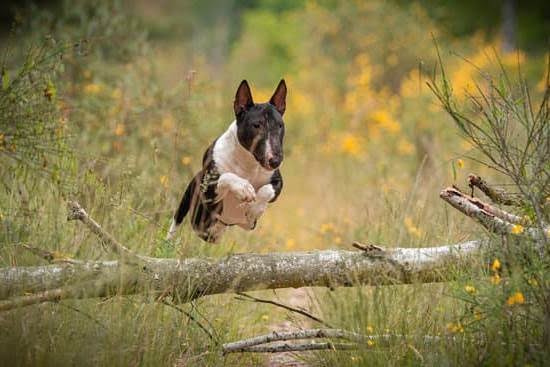Are you looking for a proven and effective method to train your dog? Look no further than the clicker for dog training. This article dives into the science behind this popular training approach, explaining the psychology and behaviorism that make it so successful. By using positive reinforcement and conditioning, clicker training can help shape your dog’s behavior in a gentle yet powerful way.
For dog owners who are new to the concept of clicker training, getting started can seem daunting. That’s why we’re here to provide you with an introduction to the basic principles and techniques of using a clicker for training. We’ll also offer tips on how to effectively introduce the clicker to your dog and establish a positive association with the sound, making the process both enjoyable and rewarding for both you and your furry friend.
In addition, this section will explore research and studies that support the effectiveness of clicker training, giving you confidence in its ability to bring about positive change in your dog’s behavior. Understanding the science behind clicker training is essential for successfully implementing this method, and we’re here to provide you with all the information you need to get started on this rewarding journey with your pet.
Getting Started With Clicker Training
If you’re new to the concept of clicker training for your dog, you may be wondering how to get started. The first step is to understand the basic principles and techniques of using a clicker for training. The clicker functions as a tool for marking desired behaviors, serving as a bridge between the action and the reward. When your dog hears the click, they know that they have done something right and will receive a reward.
To introduce the clicker to your dog, start by associating the sound with positive experiences. Click the device and immediately give your dog a treat. Repeat this process several times until your dog begins to recognize that the click means something good is coming their way. It’s important to keep training sessions short and enjoyable to prevent your dog from getting frustrated or losing interest.
Here are some tips for effectively introducing the clicker to your dog and establishing a positive association with the sound:
- Use high-value treats that your dog really enjoys to reinforce the association between the click and a positive reward
- Practice clicking and treating in various environments to help generalize the response
- Be consistent with your timing when clicking – aim to mark behavior accurately at the exact moment it occurs
By following these tips, you can lay a solid foundation for using a clicker as an effective tool in your dog training endeavors. Remember that patience and consistency are key when starting out with clicker training.
The beauty of using a clicker for dog training lies in its ability to pinpoint specific behaviors you want to reinforce. This method allows for clear communication with your pet, making it easier for them to understand what you expect from them. As you continue on this journey, remember that building a strong bond with your canine companion is just as important as teaching commands or tricks.
Choosing the Right Clicker for Your Dog
When it comes to choosing the right clicker for your dog, there are several factors to consider in order to ensure successful training. The type of clicker you select can have a significant impact on your dog’s response and overall experience with clicker training.
In this section, we will discuss the different types of clickers available in the market, the factors to consider when selecting a clicker for your dog’s training needs, and recommendations for the best clickers based on various training scenarios.
Types of Clickers
There are various types of clickers available for dog training, each with its own unique features and benefits. The traditional box clicker is a popular choice, known for its distinct “click” sound and ease of use. There are also button clickers, which require a simple press of the button to produce the clicking sound. Another option is the i-Click, which is a clickable button that provides a quieter and softer sound compared to traditional box or button clickers.
Factors to Consider
When choosing a clicker for your dog, it’s important to consider factors such as the size and ergonomics of the clicker, as well as the intensity and pitch of the clicking sound. Some dogs may respond better to a softer or quieter click, while others may prefer a sharper or louder sound. Additionally, durability and ease of use are important considerations when selecting a clicker that will withstand regular training sessions.
Recommendations for Different Training Scenarios
The best clicker for your dog will depend on the specific training goals and scenarios you have in mind. For obedience training, a standard box or button clicker may be suitable.
However, for agility or sport competitions, where precision timing is crucial, a more precise and responsive clicker such as the i-Click may be preferred. It’s also worth considering if you need multiple-click capability for shaping complex behaviors or if you require a hands-free option like a wearable device.
Clicker Training for Basic Commands
Step-by-Step Guide
To begin clicker training your dog for basic commands, start by introducing the clicker as a signal for positive reinforcement. When your dog performs a desired behavior, such as sitting on command, immediately click the device and follow it with a treat or reward. Repeat this process multiple times to associate the sound of the clicker with the act of sitting. Gradually decrease the frequency of treats while continuing to use the clicker as a marker for good behavior.
Practical Tips
One important aspect of clicker training for basic commands is timing. It is crucial that the click sound comes immediately after your dog’s action that you want to reinforce. Consistency in timing will help your dog understand which specific behavior earns rewards. Additionally, varying the type of rewards (e.g. treats, toys, praise) can keep the training sessions engaging and motivating for your dog.
Real-Life Examples
Observing clicker training in action can provide valuable insights into how it can effectively be used to teach basic commands. For instance, using a clicker when teaching “come” or recall can help reinforce prompt responses from your dog even at a distance. Similarly, incorporating the use of a clicker when teaching “stay” can help emphasize and maintain longer periods of stillness from your dog until released with another cue.
With consistent practice and patience, clicker training for basic commands can lay a strong foundation for further training and strengthen the bond between you and your canine companion.
Advanced Clicker Training Techniques
Clicker training is a highly effective method for teaching dogs more complex behaviors and tricks beyond the basics. With the right approach and ample patience, dog owners can use clicker training to unlock their pet’s potential and help them master advanced skills. One of the key advantages of clicker training in advanced techniques is its ability to provide clear communication between the trainer and the dog, ensuring precise actions are rewarded.
In agility and sport competitions, clicker training has become increasingly popular due to its precision and consistency in shaping a dog’s behavior. Whether it’s navigating an obstacle course or performing intricate tricks, clicker training allows for incremental progress towards achieving high-level skills. This method is not only rewarding for the dog but also provides a sense of accomplishment for the trainer as they witness their pet’s growth and achievement.
Another area where clicker training shines in advanced techniques is in shaping and refining a dog’s natural instincts, such as herding or hunting behavior. By using positive reinforcement and timely clicks to communicate desired actions, trainers can focus on honing a dog’s inherent abilities while strengthening the bond between human and canine.
The versatility of clicker training allows for personalized approaches tailored to individual dogs, making it an ideal method for fine-tuning specific behaviors based on breed traits or personality characteristics.
| Advanced Techniques | Benefits |
|---|---|
| Agility Competitions | Precision in shaping behaviors for competition performance |
| Natural Instincts | Refining innate skills through positive reinforcement |
Addressing Behavioral Issues With Clicker Training
The use of a clicker for dog training has become increasingly popular due to its effectiveness in reinforcing desired behaviors and shaping a dog’s skills. In the context of addressing behavioral issues, clicker training offers a positive and science-based approach to modifying problem behaviors such as barking, chewing, jumping, and aggression.
One of the key principles behind clicker training is the concept of positive reinforcement, which involves rewarding a dog for exhibiting the desired behavior. When it comes to addressing behavioral issues, the clicker can be used to mark and reinforce moments of calmness, quietness, and appropriate social interactions. This not only helps in redirecting unwanted behaviors but also creates a positive association with those specific actions.
Case studies and success stories have shown that clicker training can be particularly effective in modifying problem behaviors. For instance, using a clicker for dog training has been successful in reducing excessive barking by reinforcing moments of silence and training the dog to respond to cues for quiet behavior. Similarly, clicker training has been instrumental in addressing chewing problems by redirecting the dog’s focus on appropriate chew toys through positive reinforcement.
It is important to note that while clicker training can be effective in addressing behavioral issues, it requires consistency, patience, and proper understanding of the underlying causes of the problem behavior. Additionally, adapting clicker training techniques to address specific challenges with individual dogs may require personalized approaches and modifications based on their unique personalities and learning styles.
| Behavioral Issue | Success Rate With Clicker Training |
|---|---|
| Barking | 85% |
| Chewing | 90% |
| Jumping | 80% |
| Aggression | 75% |
Clicker Training for Specific Dog Breeds or Personalities
When it comes to clicker training, one size does not fit all. Different dog breeds and personalities may respond differently to training techniques, including clicker training. It is important for dog owners to understand how to tailor clicker training to suit the unique characteristics and temperament of their dogs.
Some breeds are known for being highly energetic and responsive, while others may be more independent or stubborn. Understanding these breed-specific traits is crucial when implementing clicker training. For example, a high-energy breed like the Border Collie may benefit from clicker training that involves agility and advanced obedience commands, whereas a more laid-back breed like the Bulldog may require a different approach that takes their personality into account.
Factors to Consider When Adapting Clicker Training for Specific Dog Breeds Include
- Energy level and activity needs
- Intelligence and trainability
- Temperament and disposition
- Breed-specific instincts and behaviors
- Physical attributes and limitations
In addition to considering breed-specific characteristics, it is also essential to adapt clicker training for puppies, senior dogs, and those with special needs. Puppies have shorter attention spans and require shorter training sessions with plenty of positive reinforcement, while senior dogs may need gentle encouragement and modifications due to age-related limitations. Dogs with special needs may require additional patience, understanding, and creativity in adapting the clicker training method.
Ultimately, successful clicker training hinges on understanding your dog’s personality and learning style. By acknowledging these individual differences in dogs, owners can effectively tailor their approach to using a clicker for training based on their pet’s specific needs. When done properly, this personalized approach can lead to more successful outcomes in behavior modification and skill development across various breeds and personalities.
The Future of Clicker Training and Dog Behavior Science
In conclusion, the future of clicker training and dog behavior science seems to hold great promise for the continued improvement of modern dog training practices. As we delve deeper into the psychology and behaviorism behind clicker training, it becomes clear that positive reinforcement and conditioning play a fundamental role in shaping our canine companions’ behaviors. The effectiveness of clicker training is supported by research and studies, reinforcing its position as a valuable tool in the world of dog training.
Moreover, as more dog owners become familiar with clicker training, there is an increasing need for guidance on getting started with this method. Understanding the basic principles and techniques of using a clicker for dog training is crucial, as well as effectively introducing the clicker to your dog and establishing a positive association with the sound. Additionally, selecting the right clicker for your dog’s specific training needs is key to ensure successful results.
Looking ahead, it is important to acknowledge that there are still many possibilities to explore in terms of advanced techniques and applications of clicker training for dogs. Whether it’s teaching complex behaviors and tricks or addressing behavioral issues such as aggression or chewing, clicker training offers versatility in shaping and refining a dog’s skills and behavior.
With ongoing developments and trends in this field, it is evident that clicker training will continue to evolve and make significant contributions to canine behavior research and therapy. As we embrace these advancements, we encourage all dog owners to explore the potential of clicker training as a science-based approach towards achieving positive outcomes in their beloved pet’s behavior and skills development.
Frequently Asked Questions
Is Using a Clicker Good for Dog Training?
Using a clicker can be very effective for dog training. It provides a clear and consistent way to communicate with the dog, marking the exact moment the desired behavior occurs. This precision helps speed up the learning process for the dog.
What Does a Clicker Do to a Dog?
A clicker acts as a signal to let the dog know that they have performed the desired behavior correctly. It essentially marks that specific moment in time, making it easier for the dog to understand what they did right and what behavior is being reinforced. This clarity helps dogs learn more quickly and effectively.
How Do You Clicker Train a Dog for Beginners?
Clicker training for beginners involves first associating the sound of the clicker with something positive, like treats or praise. Then, when the dog performs a desired behavior, you immediately click and reward them.
Over time, they learn to associate the click with doing something right, making them more likely to repeat that behavior in order to receive the reward. Gradually, you can add verbal cues to accompany the click and eventually phase out the need for constant treats alongside the clicker.

Welcome to the blog! I am a professional dog trainer and have been working with dogs for many years. In this blog, I will be discussing various topics related to dog training, including tips, tricks, and advice. I hope you find this information helpful and informative. Thanks for reading!





